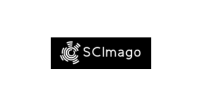ANESTESIA INALATÓRIA COM O USO DE MÁSCARA LARÍNGEA EM UM CHIMPANZÉ (Pan troglodytes)
DOI:
https://doi.org/10.5380/avs.v5i1.3880Keywords:
máscara laríngea, permeabilidade, chimpanzé, anestesia inalatória. laringreal mask, patency, chimpanzee, inhalatory anesthesia.Abstract
Um exemplar de chimpanzé (Pan troglodytes) do sexo masculino, com idade de 5 dias e peso de 1,72 kg, foi submetido à anestesia inalatória através de uma máscara laríngea, para realização de amputação do antebraço esquerdo mutilado em função de agressão intraespecífica. A máscara laríngea auxilia na manutenção da permeabilidade das vias aéreas do paciente anestesiado, permitindo um controle seguro e eficaz da ventilação em situações distintas. O paciente sofreu indução anestésica com halotano e oxigênio, através da máscara facial classicamente empregada em pacientes humanos, sem medicação pré-anestésica. Após três minutos de administração do anestésico em concentrações crescentes até 1,5%, observou-se excelente miorrelaxamento, inclusive da musculatura da região temporo-mandibular. Foi inserida então uma máscara laríngea nº 1,5 não insuflada, que foi conectada a um circuito semi-aberto de anestesia inalatória, através do sistema de Baraka. A anestesia foi mantida com oxigênio e halotano em concentrações variáveis entre 0,3 e 0,5%. Para possibilitar redução da concentração alveolar mínima do anestésico inalatório e permitir analgesia pós-operatória, foi realizado por via supra-clavicular um bloqueio do plexo braquial, empregando-se cloridrato de bupivacaína a 0,25%, sem vasoconstritor, na dose total de 2,1 mg. Os dados vitais do paciente foram periodicamente monitorizados pela mensuração das freqüências respiratória e cardíaca através de oximetria de pulso. A anestesia prolongou-se por 120 minutos, observando-se excelente analgesia e miorrelaxamento plenamente adequado. A SpO2 se manteve constante em 100% durante todo o procedimento, e a freqüência cardíaca variou entre 94 e 100 bpm. O despertar ocorreu dois minutos após cessada a administração do anestésico inalatório, e os reflexos mostraram-se plenamente presentes em cinco minutos. A inserção da máscara laríngea ocorreu na primeira tentativa, e seu uso apresentou-se como uma excelente alternativa para adequada ventilação do paciente.
Inhalatory anesthesia with laryngeal mask in a chimpanzee (Pan troglodytes)
Abstract
A five-day old male chimpanzee (Pan troglodytes) weighing 1,72 Kg was submitted to inhalatory anesthesia using a laryngeal mask, under the indication of amputation of the left forearm mutilated because of an intraespecific aggression. The laryngeal mask helps to maintain the air tract patency in anesthetic patients, allowing a safe and effective ventilation control in distinct situations. The patient was submitted to anesthetic induction with halothane and oxygen through the facial mask commonly used in human patients, without pre-anesthetic drugs. After three minutes of anesthetic administration in crescent concentrations until 1.5%, an excellent myorelaxation was observed, including in the temporo-mandibular muscles. A not inflated # 1.5 laryngeal mask was inserted and connected to a semi-open circuit of inhalatory anesthesia, by using the Baraka´s system. It was maintained with oxygen and halothane in variable concentrations between 0.3% and 0.5%. In order to allow a reduction in the inhalatory anesthestic´s minimum alveolar concentration and permit post-surgical analgesia there was performed a block of the brachial plexus by supra-clavicular route, using 0.25% bupivacaine hydrochloride without vasoconstritor, in a total dose of 2.1 mg. Patients vital sings were periodically monitored by measuring respiratory and heart rates by pulse-oximetry. The anesthesia extended by 120 minutes, providing excellent analgesia and adequate myorelaxation. The SpO2 was maintained constant in 100% during the whole procedure, and the heart rate oscillated between 94 and 100 bpm. The waken-up occurred two minutes after ceasing the administration of the inhalatory anesthetic, and all the reflexes were present within five minutes. The laryngeal mask was correctly inserted in the first trial, and its use was an excellent alternative for the patients adequate ventilation.
Downloads
How to Cite
Issue
Section
License
Authors that wish to publish in AVS agree with the following conditions:
- To keep copyright of the article and allow the AVS to publish the first time. The article will be licensed by Creative Commons - Atribuição 4.0 Internacional allowing the sharing of their work.
- Authors may distribute their work by other channel of distribution (ex.: local or public repository).
- Authors have the permission to publish their work online, using different channels (similar to above), even before the final editorial process.













